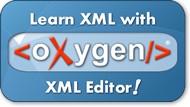PHP Sessions


A PHP session variable is used to store information about, or
change settings for a user session. Session variables hold information about one
single user, and are available to all pages in one application.
PHP Session Variables
When you are working with an application, you open it, do some changes and
then you close it. This is much like a Session. The computer knows who you are.
It knows when you start the application and when you end. But on the internet
there is one problem: the web server does not know who you are and what you do
because the HTTP address doesn't maintain state.
A PHP session solves this problem by allowing you to store user information
on the server for later use (i.e. username, shopping items, etc). However, session information is temporary and
will be deleted after
the user has left the website. If you need a permanent storage you may want to store the data in a database.
Sessions work by creating a unique id (UID) for each
visitor and store variables based on this UID. The UID is either stored in a
cookie or is propagated in the URL.
Starting a PHP Session
Before you can store user information in your PHP session, you must
first start up the session.
Note: The session_start() function must appear BEFORE the <html> tag:
<?php session_start(); ?>
<html>
<body>
</body>
</html>
|
The code above will register the user's session with the server, allow you to
start saving user information, and assign a UID
for that user's session.
Storing a Session Variable
The correct way to store and retrieve session variables is to use the
PHP $_SESSION variable:
<?php
session_start();
// store session data
$_SESSION['views']=1;
?>
<html>
<body>
<?php
//retrieve session data
echo "Pageviews=". $_SESSION['views'];
?>
</body>
</html>
|
Output:
In the example below, we create a simple page-views counter. The isset()
function checks if the "views" variable has already been set. If "views" has
been set, we
can increment our counter. If "views" doesn't exist, we create a "views"
variable,
and set it to 1:
<?php
session_start();
if(isset($_SESSION['views']))
$_SESSION['views']=$_SESSION['views']+1;
else
$_SESSION['views']=1;
echo "Views=". $_SESSION['views'];
?>
|
Destroying a Session
If you wish to delete some session data, you can use the unset() or the
session_destroy() function.
The unset() function is used to free the specified session variable:
<?php
unset($_SESSION['views']);
?>
|
You can also completely destroy the session by calling the session_destroy() function:
<?php
session_destroy();
?>
|
Note: session_destroy() will reset your session and you will lose all
your stored session data.


Learn XML with <oXygen/> XML Editor - Free Trial!
 |
|
oXygen helps you learn to define,
edit, validate and transform XML documents. Supported technologies include XML Schema,
DTD, Relax NG, XSLT, XPath, XQuery, CSS.
Understand in no time how XSLT and XQuery work by using the intuitive oXygen debugger!
Do you have any XML related questions? Get free answers from the oXygen
XML forum
and from the video
demonstrations.
Download a FREE 30-day trial today!
|
|